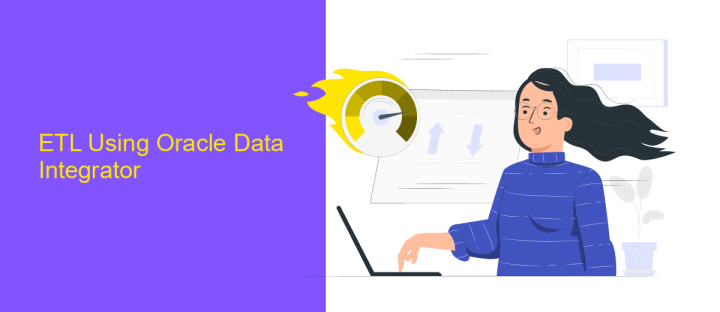SQL to Oracle Data Integration
Integrating SQL data with Oracle databases is a crucial task for businesses aiming to leverage comprehensive data analytics and streamline operations. This article explores the methodologies and best practices for efficient SQL to Oracle data integration, ensuring data consistency, reliability, and enhanced performance. Whether you're a database administrator or a data engineer, understanding these integration techniques is essential for optimizing your data management processes.
Data Extraction from SQL Server
Extracting data from SQL Server is a crucial step in the data integration process with Oracle. This involves connecting to the SQL Server database, executing queries to fetch the required data, and then preparing this data for transfer. Ensuring data integrity and consistency during extraction is essential for a smooth integration.
- Establish a connection to the SQL Server database using appropriate drivers.
- Execute SQL queries to retrieve the necessary data.
- Handle data transformations if needed to match Oracle's schema.
- Export the extracted data to a suitable format like CSV or XML.
- Ensure data validation to maintain consistency and accuracy.
Once the data is successfully extracted, it can be transferred to the Oracle database using various methods such as data import tools or custom scripts. Proper planning and execution of the extraction process can significantly enhance the efficiency and reliability of the data integration project.
ETL Using Oracle Data Integrator

Oracle Data Integrator (ODI) is a comprehensive data integration platform that facilitates ETL (Extract, Transform, Load) processes with high performance and scalability. ODI employs a unique Extract, Load, and Transform (ELT) architecture, which leverages the power of the target database to perform transformations, thus optimizing the use of system resources. This approach not only enhances the speed of data processing but also simplifies the overall integration process by reducing the need for intermediate data storage and movement.
One of the key features of ODI is its ability to integrate seamlessly with various data sources, including SQL databases. By utilizing tools like ApiX-Drive, users can automate and streamline their data workflows, ensuring real-time data synchronization between disparate systems. ApiX-Drive offers a user-friendly interface and pre-built connectors that simplify the setup of complex integrations, making it easier for organizations to maintain data consistency across different platforms. This combination of ODI and ApiX-Drive provides a robust solution for efficient and reliable data integration, catering to the needs of modern enterprises.
Data Mapping and Transformation

Data mapping and transformation are critical steps in the process of integrating SQL data into an Oracle database. These processes ensure that data from the source SQL database is accurately and efficiently transferred to the target Oracle system, maintaining data integrity and consistency.
Key steps involved in data mapping and transformation include:
- Identifying source and target data structures: Understand the schema and data types in both the SQL and Oracle databases.
- Mapping data fields: Align fields from the SQL database to corresponding fields in the Oracle database, ensuring compatibility.
- Data transformation: Apply necessary transformations to data, such as data type conversions, aggregations, and business rule applications.
- Validation and testing: Verify that the mapped and transformed data meets the required quality and integrity standards.
- Loading data: Import the transformed data into the Oracle database, ensuring minimal downtime and data loss.
By following these steps, organizations can achieve a seamless and efficient data integration process, ensuring that the data in the Oracle database is accurate, consistent, and ready for use in various applications and analytics.
Error Handling and Exception Management

Error handling and exception management are critical components in SQL to Oracle data integration processes. Properly managing errors ensures data integrity and smooth execution of integration tasks. When errors occur, they should be identified, logged, and addressed promptly to minimize disruption.
Oracle provides several mechanisms to handle errors and exceptions, including predefined exceptions, user-defined exceptions, and the use of the EXCEPTION block in PL/SQL. These tools help developers manage unexpected situations effectively and maintain robust data integration workflows.
- Predefined Exceptions: Oracle offers a set of predefined exceptions that automatically handle common errors.
- User-Defined Exceptions: Developers can create custom exceptions to handle specific error conditions unique to their applications.
- EXCEPTION Block: This PL/SQL structure allows for the definition of error-handling routines within a block of code.
Implementing a comprehensive error handling strategy in SQL to Oracle data integration not only improves reliability but also facilitates easier debugging and maintenance. By anticipating potential issues and addressing them proactively, organizations can ensure seamless data flow and operational efficiency.


Data Loading into Oracle Database
Loading data into an Oracle Database efficiently is crucial for maintaining performance and data integrity. The process typically involves using Oracle's SQL*Loader or Oracle Data Pump, both of which are designed to handle large volumes of data. SQL*Loader is a high-speed data loading utility that supports various data formats, while Oracle Data Pump provides advanced capabilities for high-speed data movement and metadata management. These tools ensure that the data is accurately and quickly loaded into the database, minimizing downtime and maximizing throughput.
For those looking to streamline their data integration processes, services like ApiX-Drive can be invaluable. ApiX-Drive offers a user-friendly interface for setting up automated data transfers between different systems, including Oracle databases. By leveraging ApiX-Drive, organizations can reduce the complexity of data loading tasks, ensuring that data is consistently and reliably integrated. This not only saves time but also reduces the risk of human error, making it an excellent choice for businesses aiming to enhance their data management strategies.
FAQ
What is SQL to Oracle Data Integration?
What are the common methods for SQL to Oracle Data Integration?
What challenges might I face during SQL to Oracle Data Integration?
How can I automate SQL to Oracle Data Integration?
Why is data integration between SQL and Oracle databases important?
Apix-Drive is a universal tool that will quickly streamline any workflow, freeing you from routine and possible financial losses. Try ApiX-Drive in action and see how useful it is for you personally. In the meantime, when you are setting up connections between systems, think about where you are investing your free time, because now you will have much more of it.

